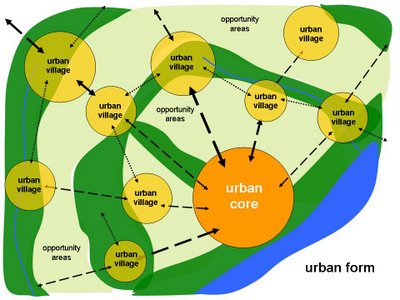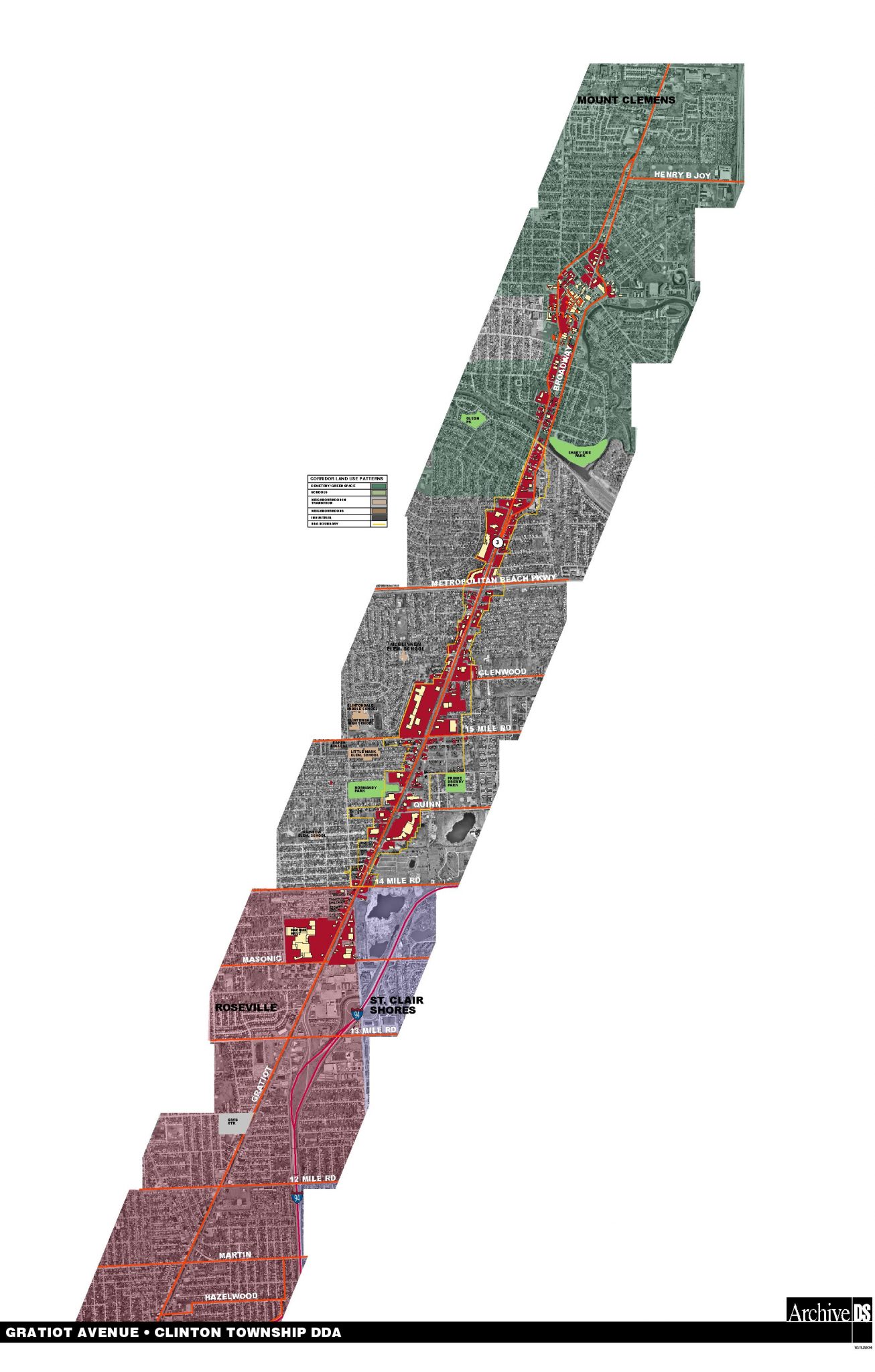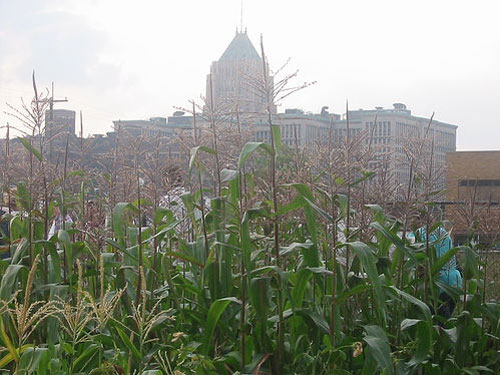My recent and past experiences as both a practitioner and an educator have informed my view of the post-industrial city. I have been involved in three independent yet complimentary initiatives, all focused on specific aspects of Detroit: community, structure, and connectivity. Each of these elements will be outlined here and expanded upon in future posts.
This post argues that Detroit provides the most fertile ground for the development of the new city based on our experiences.

The many trials and tribulations of Detroit have been well documented:
-population loss to below 1 million after peaking near 2 million in the 1950s
-racial polarization
-economic disinvestment leading to physical devastation
Even though cities have seen over the past decade an increase in interest in reconstituting their cores, there still exists substantial areas of disinvestment. This brought about a condition of vast areas of vacancy and decay in many of the post-industrial metropolises, especially in the mid-west. Noted urban planner, Jonathan Barnett, in his book Redesigning Cities (Jonathan Barnett, Redesigning Cities, Planners Press 2003), identifies the fact that these areas should be opportunities for new real estate investment because many are located in excellent central city locations.
Barnett refers to Detroit as both a tragedy and an opportunity. He notes that thirty or forty years ago that large tracks of vacant land would be assembled into super blocks, but today cities have learned their lessons and leave the streets and blocks in place. He also cites the risk of Detroit becoming just another “edge city” within its metropolitan area because of the transfer of the historic advantage of cities being located near waterways to the new nucleus: the airport.Detroit is the same distance from its airport as are many of its suburban neighbors.
The intrigue of Detroit stems, of course, from the fact that it is “shrinking”. This shrinking is the attribute that provides the city with unparalleled opportunities for [re]development. The urban condition has become much more than the “hole in the donut”. It is a tattered tapestry. The element that sustains any tapestry, though, is the quality of the connections.
COMMUNITY: The Villages Charrette
John Fraser Hart in his book, The Land that Feeds Us (Hart, The Land That Feeds Us, Norton and Company 1991), outlines the deconstruction of the farming industry through consolidation and dissemination of land resources. Hart reasons that a return to immediate access to fresh goods provides a niche for urban areas. This thinking informs the decisions that created the “Villages” community in Detroit. If the community could produce its on food it could create its own self sustaining economy.
I was a team leader for the Villages Charrette, a planning initiative for Detroit’s Eastside which took place over a three day period in March of 2009 and involved the faculty and students of the three universities in the Detroit area: the University of Detroit Mercy, the University of Michigan, and Lawrence Technological University.

Hart explains that it is not just the availability of land that makes this an attractive alternative for the new city, it is the location. Historically, older urban areas have developed with concentric rings and the intensely cultivated farmland has been pushed outward as the city has expanded. The inner rings have the opportunity for nurseries and greenhouses and the outer rings have opportunities for truck farms and dairy farms. These types of proposals are controversial but they deserve a critical analysis as PART of a rethinking of how some cities are organized.
STRUCTURE: Sustainable Design Assessment Team
Can design heal?
Some architects and planners think so. In some respects that was the charge of the American Institute of Architects’ Sustainable Design Assessment Team. The team came to Detroit in hopes of fashioning a framework for that could help in dealing with the massive change that is going on in the nation’s tenth largest city.
My role in the SDAT process was to provide first hand knowledge of the city to the national team as well as to lead teams of planners to generate ideas and analysis for the study area.

An Equation for Thriving Cities:
Community Values/ Financial Values = 1
The three day charrette was a high energy interactive event whereby the national team representatives began the work of synthesizing the information on Detroit gathered from meetings with stakeholders, clergy, Community Development Corporation directors, local small-scale developers, local politicians and university representatives from Wayne State University and the University of Detroit-Mercy.
Understanding and defining the land use sets the framework for dealing with equity through access to commerce. What were the Industries that could be tapped? The SDAT team identified Food and agriculture and Renewable Energy resources as two areas that Detroit could immediately tap into. Is it too late now for these initiatives?
CONNECTIVITY: The Corridor
Currently, we are involved with projects that are rethinking the major arteries that serve as the urban planning and infrastructural backbone for the city. We have studied and planned many of Detroit’s corridors: Gratiot Avenue, 8 Mile Road, Vandyke Avenue. Our latest arterial of focus for work and investigation is Woodward Avenue, Detroit’s Main Street. We are part of two multi-disciplinary teams that are looking at transit alternatives for Woodward as well as development of a Complete Streets plan for the corridor.

In order to truly achieve new, better cities we must strive to use opportunities that are inherent in a place to enhance our communities. Historically, society has used technology to overcome the environment. The city of the future will use technology to preserve the environment or enhance it. Technologies for harnessing neglected resources (e.g.: wind, water, etc.,..) and universal access to information are near term realities.
The City of Opportunity `promotes sustainable urban settlement patterns and open space preservation/allocation based on environmental and social priorities. Sustainable urbanism features innovative flexible prescriptions for highest marketability, mixed housing types and land uses, and minimal disturbance to the existing topography and ecosystems.
“The City of Opportunity”: The condition where the city develops based on an acceptance of its reality as opposed to its desires.
New proposals for mega-projects in our urban cores bring hope for the present but at the same time threaten the future by creating a “one size fits all” approach to city rebuilding. Without proper attention to the attributes that make each city unique and the connective tissue that bind these attributes, the cities of the post-industrial midwest will not survive.
Dorian Moore, RA, MArch is an architect, urbanist, retail entrepreneur, developer, educator, and Vice-President of Archive DS in Detroit and Toronto. Dorian is co-owner of retail establishments in Downtown Detroit, including the Pure Detroit Stores, The Rowland Cafe and Stella International Cafes.

